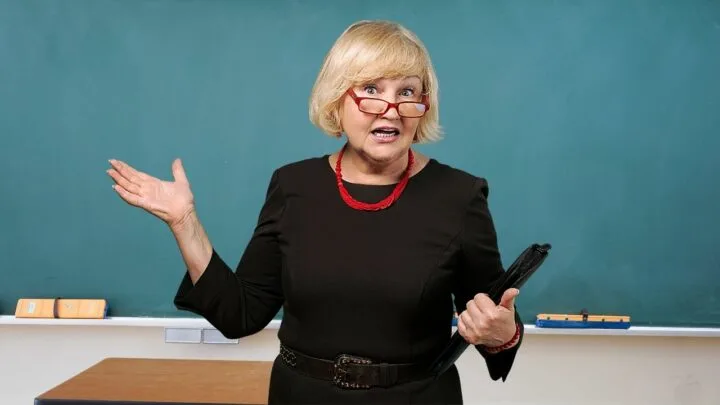Using commas with the vocative case is one of the first things we learn at school when it comes to writing classes. That’s how important these types of commas are.
But why not? Just like periods or full stops, commas are actually some of the hardest punctuation marks to master – even among adults.
To get rid of this confusion, this post tackles when exactly we should use a comma before a vocative expression in detail.
Before we get deeper into the core, let’s start with a quick answer.
When should we put a comma before a vocative?
A comma should come before the vocative expression when it is used at the end or middle of a sentence, as well as in casual email salutations like “hi” and “hello” (but not “dear”). By default, a vocative comma should always come before people’s names, name titles, and terms of endearment.
Knowing vocative commas and vocative expressions
The advent of technology has paved the way to make communication more instant. This event has somehow influenced people’s leniency towards using “proper” punctuation.
Albeit a bit technical at the surface, a “vocative comma” is simply the comma used before or after names (direct address) mostly in the formal writing context.
The term “vocative” is a grammatical concept referring to the specific case of using nouns as direct receivers or addressees of a writer or speaker’s message.
Mimicking how actual oral speech works, using “vocative expressions” in writing allows us to “talk to” the receiver of our message directly as opposed to “talking about” them.
Say, for instance, you are texting your mom, and you want to use the word “mom” in your message because you want to call her out directly.
You will type something like this:
Example:
In the example above, the word “mom” is your direct addressee’s name, which is also known as a vocative expression in language studies.
Vocative expressions may also come as a form of English terms of endearment like “buddy” or “bestie” for friends, “honey” or “sweetie” for children, and even name titles like “ma’am” or “sir.”
If you think about it, vocatives are quite special because they help you express your relationship with other people through language.
In other words, using vocative expressions or calling people directly with their names helps us convey and build rapport or intimacy.
Comma placement before a vocative in detail
Now that we understand how simple vocatives are, knowing when and why we should place a comma before them should also be as easy as pie.
Comma-related guidelines are heavily dependent on many aspects of grammar and style, as commas actually exist for making language more organized and dramatic.
So, in case you need to re-learn the basics about commas, you may also quickly go through our comma cheat sheet to familiarize some things that you may have already forgotten.
The next sections discuss the specific conditions that guide the necessary, incorrect, and optional comma placement before a vocative word or phrase.
The mandatory comma placement before a vocative expression
There are a few conditions that guide the necessary comma placement before a vocative, but
would practically need one every single time you’re using the vocative case.
To make this clearer, here are these specific conditions:
When the vocative expression comes at the end of the sentence
A vocative comma should come before a vocative expression when the latter comes at the end of the sentence, just like in the example given early on.
Although people’s names, which are proper nouns, are the best examples for vocative expressions, they are not necessarily limited to such kinds of words.
As long as you are using a word in the vocative or “direct message receiver” case, you would always need a comma before it
A vocative comma should come before the word “everyone” – a pronoun that bears the meaning “all” – in the next example as the sentence is intended directly to the audience:
Examples:
The end-sentence placement of a vocative expression is also commonly observed in questions, like the next examples:
Examples:
When the vocative expression comes in the middle of the sentence
Based on the guidelines above, we can assume that a pre-comma is also needed when a vocative expression comes in the middle of the sentence.
However, in situations like this, you should also use another comma immediately after the vocative expression.
Doing so signals your readers that you are directly talking to them and not just talking about them, which is the very essence of using vocative commas.
Examples:
When the vocative expression is used in a salutation or greeting
The third condition in which you would need a comma before a vocative expression is when you write salutations or greetings in emails and letters.
The vocative comma in email salutations is sometimes tricky to use, though, because we use adjectives like “dear” or “dearest” most of the time.
Remember that the comma should come after the name of the person if and when you are using adjectives like “dear” or “dearest.”
The vocative pre-comma is only used in more casual salutations like the following:
Examples:
You might also want to learn more details on comma usage after salutations like “hi,” “hello,” and “dear” to make your correspondence more professional.

The incorrect comma placement before a vocative expression
If certain situations guide the correct and therefore recommended comma placement, there are also conditions where the pre-comma becomes incorrect.
Obviously enough, you cannot use a comma before a vocative expression if it is used to begin your sentence.
But, more particularly, you should not use a comma in email and letter salutations if you are using adjectives like “dear” and “dearest.”
When the vocative expression comes with adjectives in salutations
In formal correspondence, being able to know when to use punctuation marks appropriately shows communicative competence and professionalism.
That said, incorrectly placed commas could make us look like ineffective and unprofessional communicators, which is harmful to business relationships.
One of the most common punctuation is placing a comma before an addressee’s name in an email greeting or salutation when they are preceded with adjectives like “dear” or “dearest.”
Example:
So, remember never to use a comma before the name of the email or letter receiver when you are using adjectives before them.
The optional comma placement before a vocative
As you may have observed, language is dynamic and people are creative. Hence, we can conveniently make use of language as long as “meaning” is not sacrificed.
So, as long as the context allows you and your message receiver to communicate without serious problems, you may meanwhile choose to drop your comma.
When the context of the conversation is rather casual
In casual conversations, particularly on direct messaging platforms, you and your message receiver mutually and readily understand the context or situation.
In cases like this, no one will actually sanction you or the other person for not placing a comma before a vocative expression.
This is especially in overly informal conversations with your “intimates” like friends, family members, and close colleagues.
In line with this specific argument only, you don’t have to be too hard on yourself in terms of meticulously placing the vocative comma.
Example:
Frequently Asked Questions on “Comma Before a Vocative”
How do you use a vocative word?
A vocative word or a direct address is used for conveying the message directly to the message receiver, just like the word “dad” in this sentence: Are you at home, dad?
Do I need a comma after “hi” before a name?
In formal writing contexts, a comma is needed after “hi” before a name such as in email messaging. Most of the time, though, people drop this comma in casual conversations with friends and family members.
What’s the difference between an Oxford comma and a vocative comma?
An Oxford or serial comma is the last comma in a list of more than two words or phrases; this particularly comes before the conjunctions “and” and “or.” Meanwhile, a vocative comma is a comma used before or after (as well as on both sides) names, name titles, and terms of endearment.
Conclusion
The only thing that this post wants to emphasize is that commas are important symbols in writing because they make a language more “orderly” and “on point.”
So, never forget to place commas correctly before a vocative expression especially in formal writing scenarios to make communication more precise and ambiguity-free.

Hey fellow Linguaholics! It’s me, Marcel. I am the proud owner of linguaholic.com. Languages have always been my passion and I have studied Linguistics, Computational Linguistics and Sinology at the University of Zurich. It is my utmost pleasure to share with all of you guys what I know about languages and linguistics in general.

